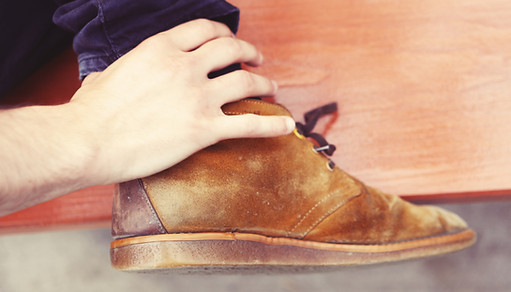Daniel Lewis Podiatry
Kingston Beach Health Centre
2 Recreation Street
Kingston Beach TAS 7050
Tel: (03) 62 299 844
Blisters

Blisters by David Webby
The feet are particularly prone to blisters. Ill-fitting shoes or friction can damage the skin, and a blister forms due to the body’s response to injury or pressure.
Depending on the cause and location, a blister can range from the size of a pinprick, to two centimeters or more in diameter.
A blood blister is usually caused by a severe pinch or bruise to the skin that breaks the tiny blood vessels (capillaries).
Symptoms
The symptoms of a blister include:
-
Reddened and tender skin patch
-
Raised lump filled with clear fluid
-
Sometimes, the lump is filled with blood.
Causes
A blister is usually the body’s attempt to cushion the underlying skin tissues from further damage during the healing process. Some common causes of blisters include:
-
Ill-fitting shoes
-
Friction
-
Scalds or burns
-
Severe sunburn
-
Allergic reaction to irritants
-
Viral skin infection (such as herpes/warts)
-
Fungal skin infection (such as tinea).
Treatment
Blisters rarely need medical attention, unless they are severe, recurrent, caused by burns or indicative of an underlying infection. Suggestions on treating a simple friction blister yourself include:
-
Resist the temptation to burst the blister. You could cause an infection or hinder your body’s healing process.
-
If the blister has burst, don’t peel off the baggy skin pocket – let your body heal the area in its own way and in its own time.
-
Frequently wash the area with salt water and keep it free from dirt or irritants.
-
If the site of the blister makes it vulnerable to popping (for example, a blister on your foot may be broken by the friction of socks or shoes), pad it with a soft dressing, securely taped.
-
Don’t use tape alone, as removing the tape may rip the skin off the blister. Change the dressing daily.
-
If the blister breaks, press gently to remove the fluid and apply an antiseptic (such as betadine) to reduce the risks of infection.
Seek medical attention ie your doctor or other health professional for treatment if:
-
The blister is caused by burns, scalds or severe sunburn.
-
The blister starts weeping pus.
-
The area becomes increasingly swollen or inflamed.
-
You suspect the blister is caused by some type of skin infection or allergic reaction.
How can we help you!
Depending on the cause, treatment options may include:
Proper drainage of fluid
We may use U pads to go around the blister to take pressure off the blister, so it is not painful to walk on.
Assessment of your footwear may also help assess the cause of the blisters. You may have some abnormal biomechanics that may be causing excessive friction.
Prevention strategies include:
-
Wear properly fitted shoes.
-
Choose moisture-wicking socks (socks that draw sweat away from your feet) or change socks twice daily if you have sweaty feet, as wet socks cause friction and rubbing.
-
Change damp socks promptly, as wet socks can drag against the skin.
-
Wear ‘sports socks’ when exercising or playing sports. They have padding over bony prominences and under the ball of the feet.
-
If you become aware of a localized ‘hot’ area on your foot, stop your sport and tape the area immediately.
-
Apply a foot spray deodorant to reduce sweating and thereby reduce the risk of fungal infection.